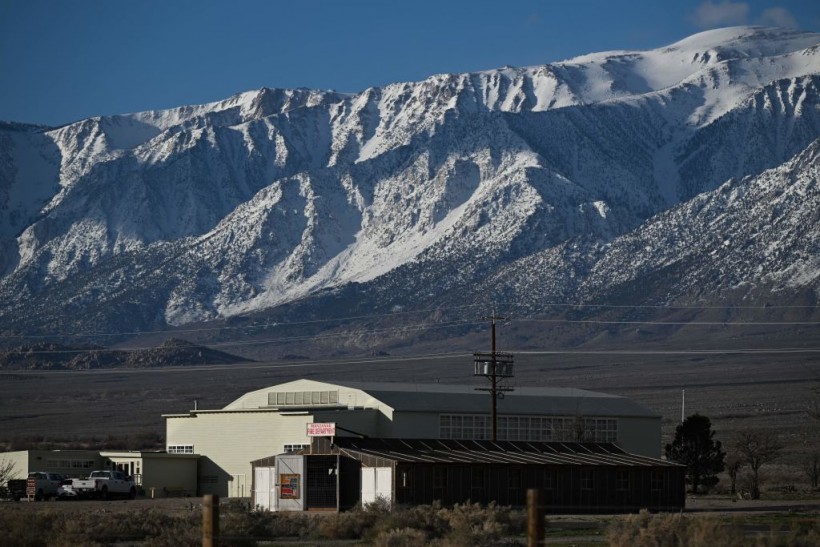
(Photo : PATRICK T. FALLON/AFP via Getty Images)
The eastern Sierras at the Manzanar National Historic Site near Independence, California, show off impressive spring snowpack.
A weekend snowstorm dumped more than two feet of flakes on the Sierra Nevada mountains — surprising even the scientists who track weather on the California peaks.
"Did anyone have the snowiest day of the 2023/2024 season being in May on their winter bingo card?" the UC Berkeley Central Sierra Snow Lab quipped on X.
"This storm dropped 26.4" (67 cm) in the last day, making May 5th the snowiest day of the season at the lab. It beat 2nd place (March 3rd) by 2.6" (6.5 cm)!"
The post was accompanied by video footage of the snow-capped mountain and frozen evergreen trees that made the area resemble a Christmas card on an early spring day.
5/5/24 9:35am Update:
— UC Berkeley Central Sierra Snow Lab (@UCB_CSSL) May 5, 2024
Did anyone have the snowiest day of the 2023/2024 season being in May on their winter bingo card?
This storm dropped 26.4" (67 cm) in the last day, making May 5th the snowiest day of the season at the lab. It beat 2nd place (March 3rd) by 2.6" (6.5 cm)! pic.twitter.com/iEg01CyabX
The Sierra Nevada mountains, which are largely within California state lines, span over 400 miles and reach a peak elevation of 14,505 feet. The Berkeley lab is located at an elevation of 6,894 feet in the unincorporated Soda Springs community.
Away from the mountain peaks, many Californians dealt with treacherous weather over the weekend — though at lower elevations there was more rain than snow. Several highways were closed due to treacherous driving conditions, while flood warnings were issued in the Bay Area.
Though the precipitaion has caused some trouble, it's nevertheless welcome. The state was declared dought free late last year after a mostly 13-year dry spell. California struggled through a historic water shortage in 2022.
Californians can expect a return to warmer weather, with temperatures in Lake Tahoe expected to reach the 60s and sunnier weather to persist throughout the week.









